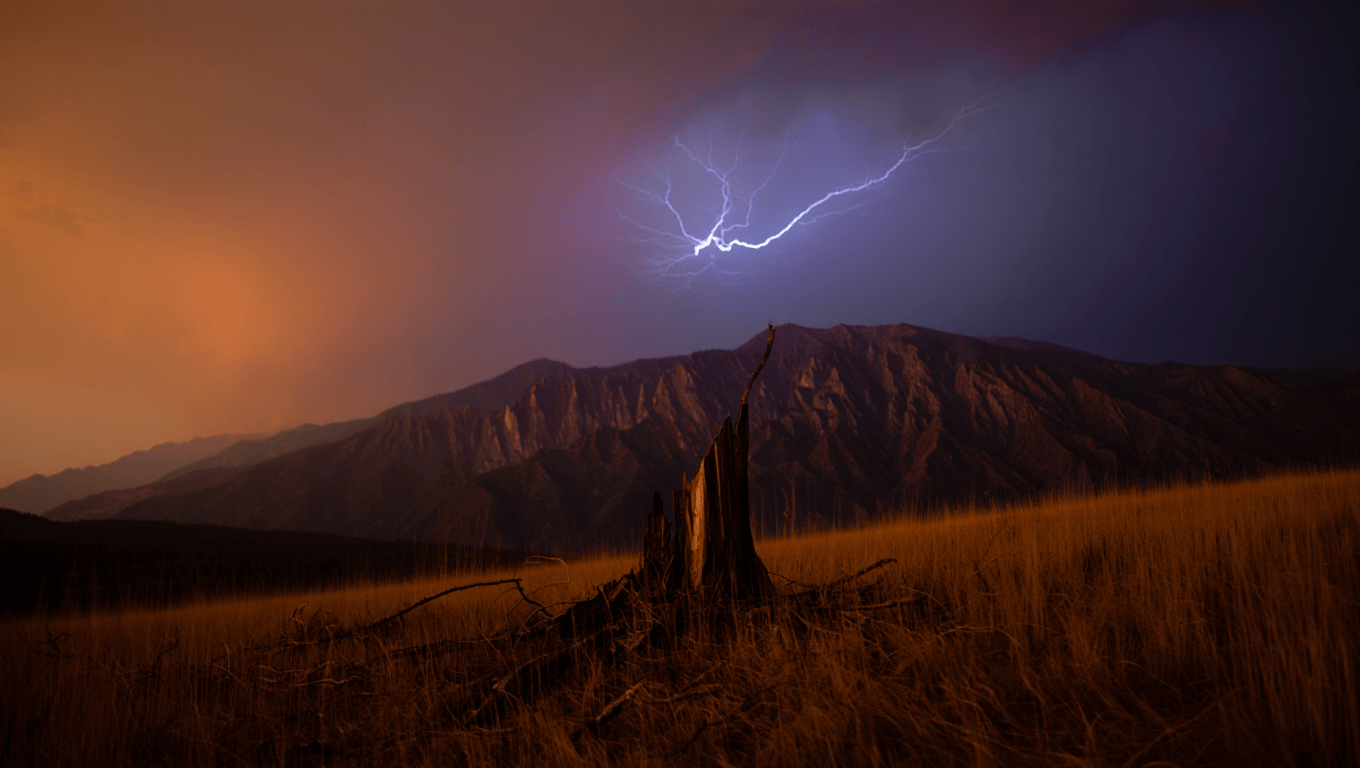Recent scientific findings have challenged longstanding theories about wildfires, revealing that even low-intensity electrical discharges can spark devastating fires in mountainous areas under extreme conditions. Published in the renowned journal Science, a study by the Institute of Atmospheric Physics at the Chinese Academy of Sciences has broadened our understanding of wildfire ignition due to lightning. This groundbreaking research points to a significant risk of fire from earlier, less intense lightning strikes that precede the mature phase of thunderstorms, transforming our approach to wildfire prevention and response.
Understanding the Unexpected Trigger of Wildfires
TubiTV Just Hit 200 Million Users – Here’s Why
10 Perfect-Score Shows Buried on Prime Video Right Now
The study delves into the conditions under which wildfires can be ignited by seemingly innocuous lightning strikes. Traditionally, it was believed that only the most intense lightning strikes during the mature phase of storms were capable of igniting fires. However, the incident in MuLi, a remote region in southwest China, illustrates a different scenario. In March 2019, a low-intensity lightning strike hit a conifer tree in a dense forest, leading to a fire that tragically claimed thirty lives, including firefighters and emergency personnel.
Contributing Environmental Conditions
Professor Yong Xue, the lead author of the study, emphasized that early-stage lightning strikes are typically weaker but can still ignite fires under certain atmospheric conditions. These include:
- Lack of precipitation
- Low humidity levels
- Strong winds
The $3.99 Streaming Service With 500+ Oscar Winners Nobody Knows About
Cancel These 3 Subscriptions Before November 1st – Here’s Why
Such conditions make even the less intense lightning strikes potent enough to set combustible materials aflame.
Case Study: The 2019 MuLi Forest Fire
The MuLi forest fire serves as a case study for understanding the dynamics of lightning-induced wildfires. Satellite and meteorological tracking showed that the fire started on the edge of a growing cloud, a zone likely affected by descending air currents that brought dry air to the ground. This area, characterized by:
- 30% relative humidity
- Considerable wind speeds, despite being lower than earlier in the day
contributed to the rapid spread of the fire. The predominant vegetation, mainly flammable resin-rich conifers, combined with rugged terrain and limited access paths, complicated early detection and firefighting efforts.
The Role of Lightning Polarity
Another aspect of the study focused on the polarity of lightning strikes and their impact on fire ignition. Unlike in North America, where positive polarity lightning is commonly associated with wildfires, the MuLi incidents predominantly involved negative polarity lightning. During the March fire, only one positive lightning strike was recorded—weak and distant from the ignition point—while negative strikes were closely concentrated both spatially and temporally around the fire’s onset.
Implications for Fire Prevention Systems
The findings underscore the need to integrate meteorological factors such as humidity, wind, and precipitation into early warning and fire prevention systems. The randomness and detection challenges posed by such fires necessitate a revision of current monitoring systems, which typically focus on post-event analysis rather than predicting high-risk conditions during the initial development of electrical storms.
This research not only challenges previous assumptions about the conditions necessary for wildfire ignition but also highlights the critical need for advanced monitoring and preparedness strategies in vulnerable regions. As we continue to face climate variability and extreme weather events, understanding the nuanced mechanisms of wildfire ignition is vital for enhancing our resilience and response strategies.
Similar posts:
- Greece: Wildfire images show flames nearing Athens, multiple areas evacuated
- Brain activity during dreams: New findings reveal the mind never rests
- Steve Kerr Reveals Childhood Home Destroyed in Pacific Palisades Wildfire
- James Webb Confirms Our Understanding of the Universe May Be Flawed
- Climate change could transform the Sahara Desert: unprecedented rainfall increase expected

Daniel Harris is a specialist journalist focused on the crossroads of breaking news, extraordinary history, and enduring legends. With a background in historical research and storytelling, he blends timely reporting with timeless narratives, making complex events and ancient myths resonate with today’s readers. Daniel’s work often uncovers surprising links between present-day headlines and legendary tales, offering unique perspectives that captivate diverse audiences. Beyond reporting, he is passionate about preserving oral traditions and exploring how extraordinary stories continue to shape culture and identity.

